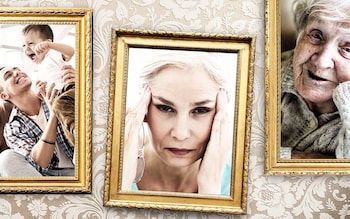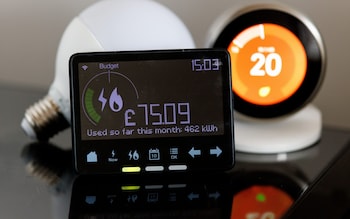It is a situation that has now become frustratingly familiar. You need to file your tax return, or make a GP appointment, or book a boiler service. Instead of simply picking up the phone and speaking to a human being, you are dragged through a labyrinthine series of online contact forms and AI chatbots, only to end up no closer to a resolution than when you started.
At the same time, even if a company did actually ring you up, a large section of society would instantly decline the call. Research published this week by Uswitch found that a quarter of 18 to 34-year-olds have never answered their phone. Ever. Almost 70 per cent said they preferred to deal with things by text, and it’s leading to a conversational crisis: a study conducted by Ofcom suggested that a quarter of mobile phone users make fewer than five phone calls a month. That is the loss of an awful lot of chit-chat. In practice, this tends to make most interactions more cumbersome and less efficient: often arrangements made over a lengthy text exchange could have been streamlined with just one quick phone call.
Here are some scenarios where texting makes things more difficult…
Making a GP appointment
There are exceptions where digital services have made access much easier, like requesting repeat prescriptions online. But for any kind of medical appointment, a text or virtual system is a poor replacement for a human conversation, where a practitioner can pick up on details that a chatbot or text exchange cannot.
A lack of face-to-face appointments has now been shown to have a concrete effect on health outcomes; a study published in the BMJ Quality & Safety journal found that “deaths and serious harms” had occurred because of wrong or missed diagnoses and delayed referrals.
Patchs, the NHS’s online GP “triage” and booking system, has good reviews but would struggle to cope with more complicated issues. Its use boils down to recommending a call-back in office hours if you need to be seen by a doctor, which would be quicker to solve over the phone.
“There are a number of things here that make digitisation of GP services really hard,” says Emma Stone, the director of evidence and engagement for the charity Good Things Foundation, which campaigns against digital exclusion. “Your experience of it varies from GP to GP. That also means that everyone is having to work out for themselves how their particular GP is using digital channels.”
However, some phone-averse young people prefer them, says Dr Sabina Dosani, a child and adolescent psychiatrist. Which is why good conversational skills from the professional at the other end are even more key to help them break through their digital comfort zone – and can go a long way. There has been “an evolution in how young people communicate,” she says. “When they get incoming phone calls it tends to be an emergency, or they’re anticipating one… for the kind of work I do, which is emotional and relational, they want an understanding human being at the end of the phone. We could have the same booking software that hairdressers use, but people want to feel connected and cared for, listened to and understood.”
The exception to this is video-conferencing and, in some cases, written appointments, which Dosani started using during Covid. “It works brilliantly for children who would otherwise never get into a clinic,” she says.
Renewing your mortgage
When one Telegraph colleague went to renew her mortgage last year, the entire process was online. It was “utterly horrific; I couldn’t speak to anyone and it’s a complicated business where you need to talk about money in, money out, various dates”.
Relegating complicated financial matters to an online form or chatbot risks excluding older people who are less digitally literate, or anyone who isn’t so tech-savvy, explains Stone. “There are things you would rather do speaking to a person, whatever your age,” she says. “For example, if you have a problem or there are higher stakes involved, and anything financial where there is a risk of fraud or scams… A human touch and a bit of reassurance is really important.”
Jo Causon, the chief executive of the Institute of Customer Service, agrees. The institute’s research shows that “50 per cent of people said that after they used a chatbot they still needed to speak with someone”. “It’s about working out which bits are best done by human beings and which are best done by tech,” she says.
The same applies to the dreaded tax return. Never has that human touch been more lacking than at HMRC, where call waiting times reached a record high earlier this year. Despite complaints, more than half of HMRC staff are still working from home, as figures from January to March show. But the same could be said for any knotty utility or repair booking, where an online calendar system has replaced a phone booking line. It’s so much easier to explain what’s wrong with your boiler to a person than to condense it into a few characters for an AI “live” chatbot.
Ordering food
In big cities, it might be possible to go to a restaurant and not speak to a soul. A large part of the conviviality of sharing a meal in a restaurant is stripped away by QR-code menus, digital ordering systems, and apps that help you split the bill, introduced during Covid and now here to stay. Gloria, a popular Italian restaurant in east London, was recently criticised for encouraging customers to pay via an app which then added a £2.99 fee for the privilege, on top of a 13.5 per cent service charge.

“Generally, customer satisfaction is at the worst level it has been since 2015,” says Causon. “There are some real challenges – one is that there aren’t enough people and they’re not always trained as much as we need, and the other is around technology and it being deployed in the right way.” She says you might be quite happy to look at the menu on your phone, but you want a human waiter to explain the wine list, for example, to make it “more of an experience”.
However, a recent – although perhaps not scientific – piece of research conducted by the restaurant chain Prezzo found that Gen Z (those currently aged between 12 and 27) suffer from “menu anxiety” and are too socially nervous to strike up a conversation with a waiter in the first place. “There’s a natural progression in the way young people are conditioned to use text-based messaging that means they’re less likely to ring for a cab or for a restaurant booking,” says Dosani.
School relations
There has been a shift away from phone calls to WhatsApp and text messages between parents and teachers and between parents themselves. Dosani, a parent of two, says that unless one of her children was ill and needed collecting immediately, most communication from their school would be “a text or an email, which is much easier to look at than it is to listen to a voicemail”.
Dosani says she has benefitted from digital communication between parents, including the (sometimes dreaded) parents’ WhatsApp chat. “[It] has completely saved me when I haven’t realised it’s a bake sale or a mufti day,” she says. But things don’t always go so well, not least because it’s much harder to gauge mood and tone over text messages than it is over the phone. “I could see how it could, if it went beyond a factual exchange, contribute to misunderstandings,” she says.
A colleague recounts one such misunderstanding: “Like most nursery and school settings, you have a Whatsapp group for your child’s year. So when my little boy was three and at nursery I was surprised to see my phone light up one night with a picture of a deep bite mark on a child’s arm.
“Biting and hitting is quite common in young children and it’s nearly always staff policy to inform the parents, but keep both sides anonymous so there aren’t further recriminations outside of the nursery setting,” she says.
“But this was the nursery WhatsApp group, and it turns out it was my child. Other parents started to comment on the picture from ‘How awful. I hope he’s OK’ to ‘That is a disgrace – the offending child should be removed from the class’. My friends started to call me as this post went viral, expressing their disbelief that this woman had clearly put my child and our family out to dry.
“I tried to call the woman in question. She wouldn’t pick up. I then messaged her and asked her to move the conversation offline. I apologised profusely as any sane person would, and asked to meet to clear the air. As she refused to speak or meet, the issue was never resolved.”
Not all disagreements can be solved by a two-minute phone call, but it’s certainly better than trial by WhatsApp.
Office communications
A decade ago, it would have seemed unthinkable that office workers sitting two desks apart would send messages on Slack or Google Chat rather than speaking in person. And yet a shift away from phone calls and in-person conversations to black-and-white messaging has taken place, exacerbated by the pandemic.
“I’ve seen it transform – my first job was to be sitting at a desk, making calls, and what’s interesting is that it’s become increasingly harder to get hold of people, to the point where it is almost considered an intrusion to phone someone,” says Rupert Wesson, a coach and trainer for Debrett’s. Younger workers in particular could lose out on learning and networking opportunities as a result. “The trick is to work out the point at which written communication – DMs, emails, Slack – is becoming counterproductive,” says Wesson. “You learn a lot by osmosis – by listening to colleagues. The only conversations you’re having now are planned and orchestrated, often with an agenda. It’s that accidental stuff, that serendipitous stuff, that you’re missing out on.”
Disclaimer: The copyright of this article belongs to the original author. Reposting this article is solely for the purpose of information dissemination and does not constitute any investment advice. If there is any infringement, please contact us immediately. We will make corrections or deletions as necessary. Thank you.



